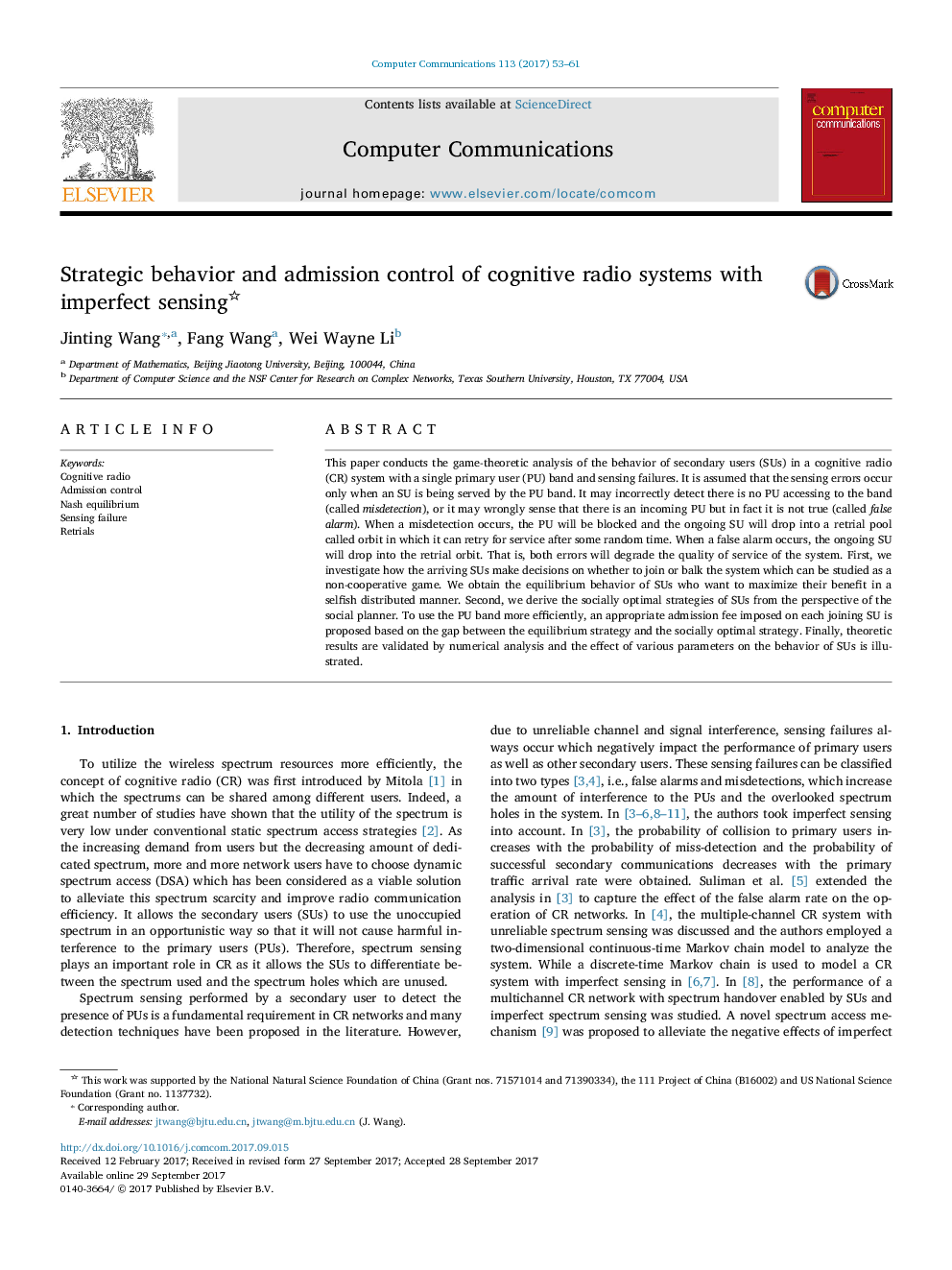ترجمه فارسی عنوان مقاله
رفتار استراتژیک و کنترل پذیرش سیستم های رادیویی شناختی با حساسیت ناقص
عنوان انگلیسی
Strategic behavior and admission control of cognitive radio systems with imperfect sensing
| کد مقاله | سال انتشار | تعداد صفحات مقاله انگلیسی |
|---|---|---|
| 150464 | 2017 | 9 صفحه PDF |
منبع

Publisher : Elsevier - Science Direct (الزویر - ساینس دایرکت)
Journal : Computer Communications, Volume 113, 15 November 2017, Pages 53-61
ترجمه کلمات کلیدی
رادیو شناختی، کنترل پذیرش، تعادل نش، شکست حساسی، بازدیدها
کلمات کلیدی انگلیسی
Cognitive radio; Admission control; Nash equilibrium; Sensing failure; Retrials;

